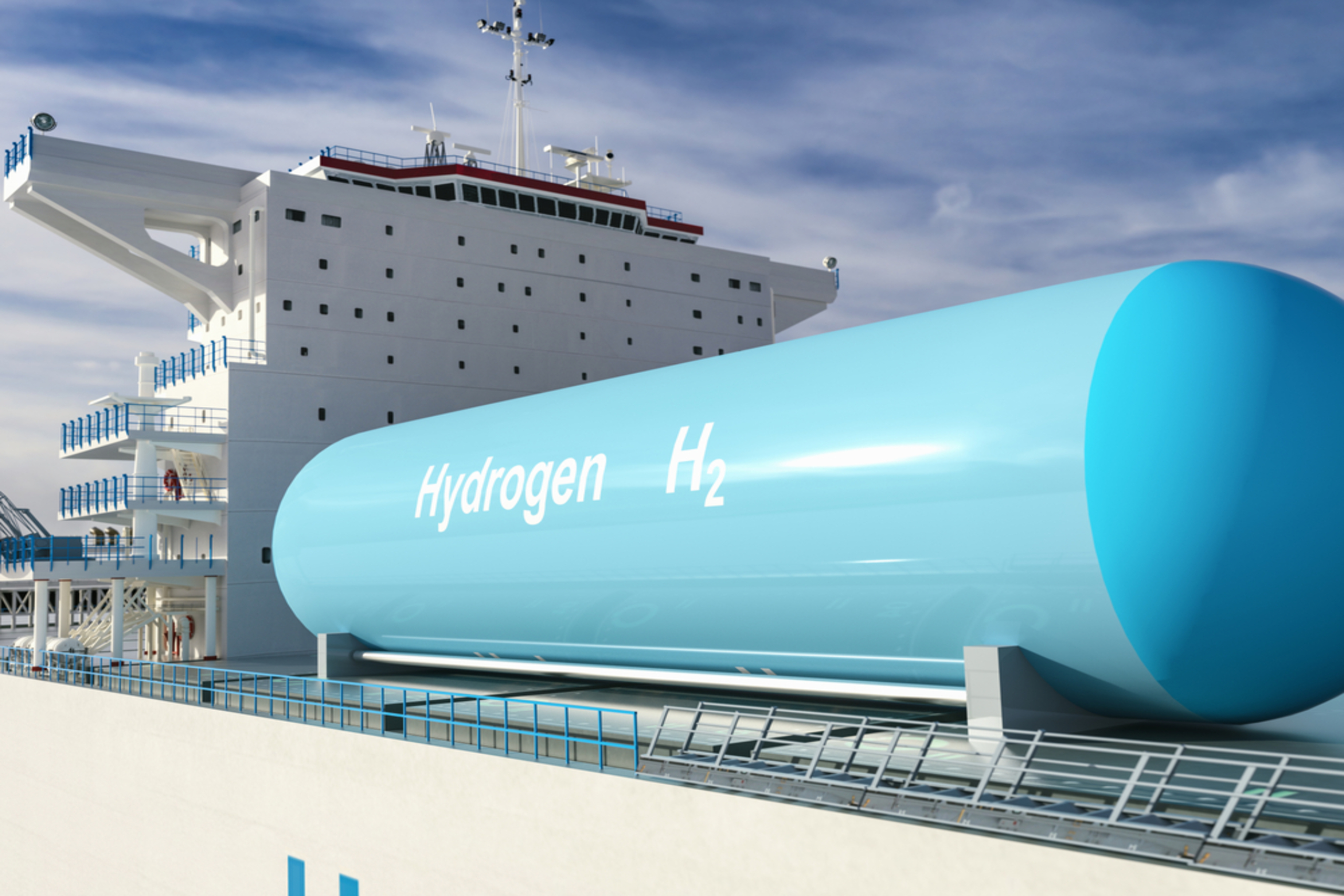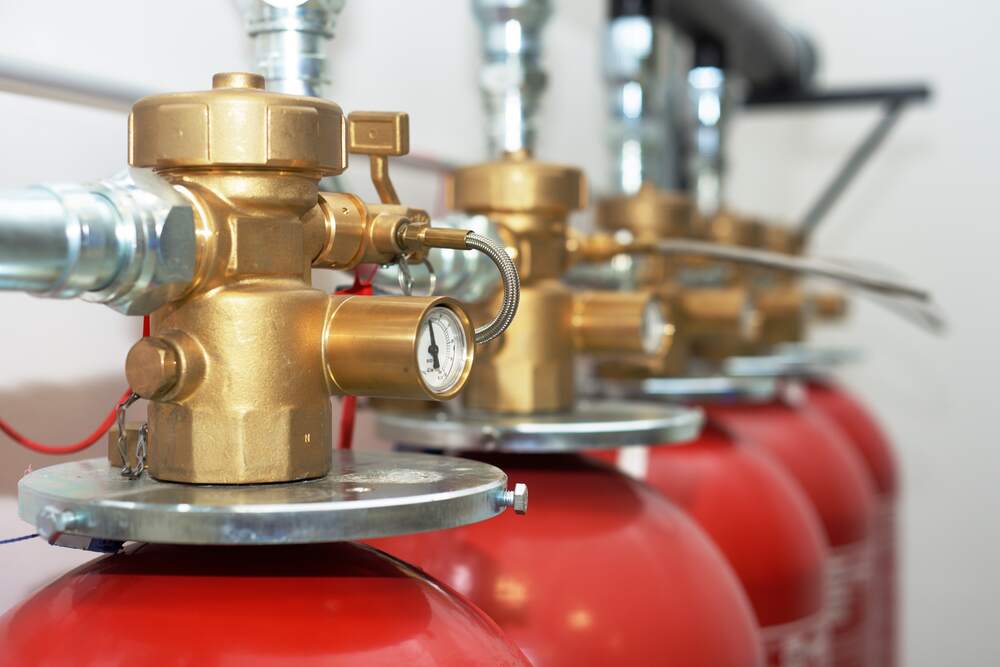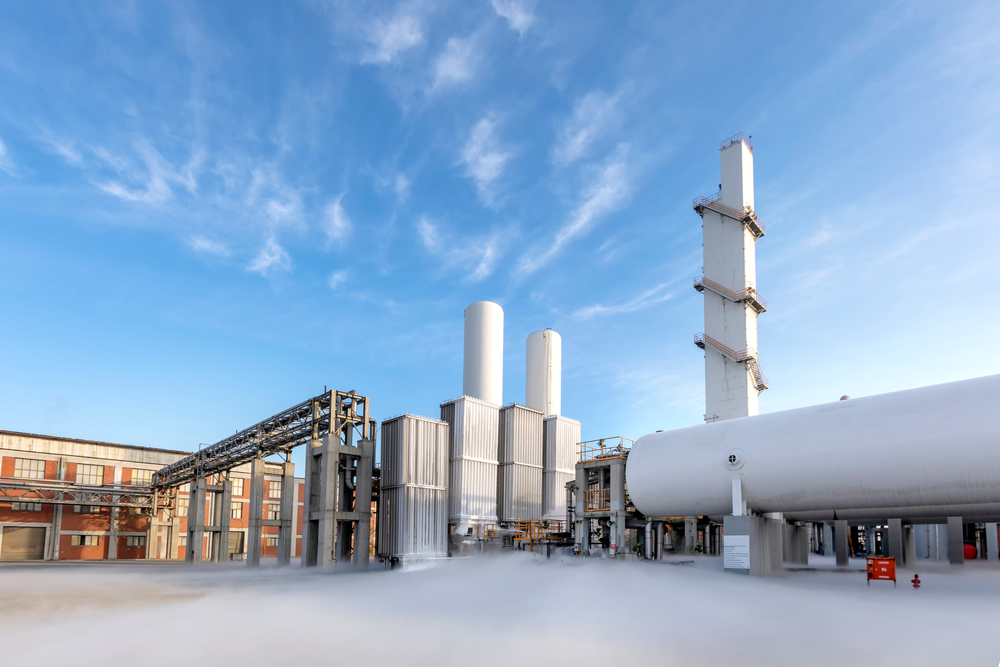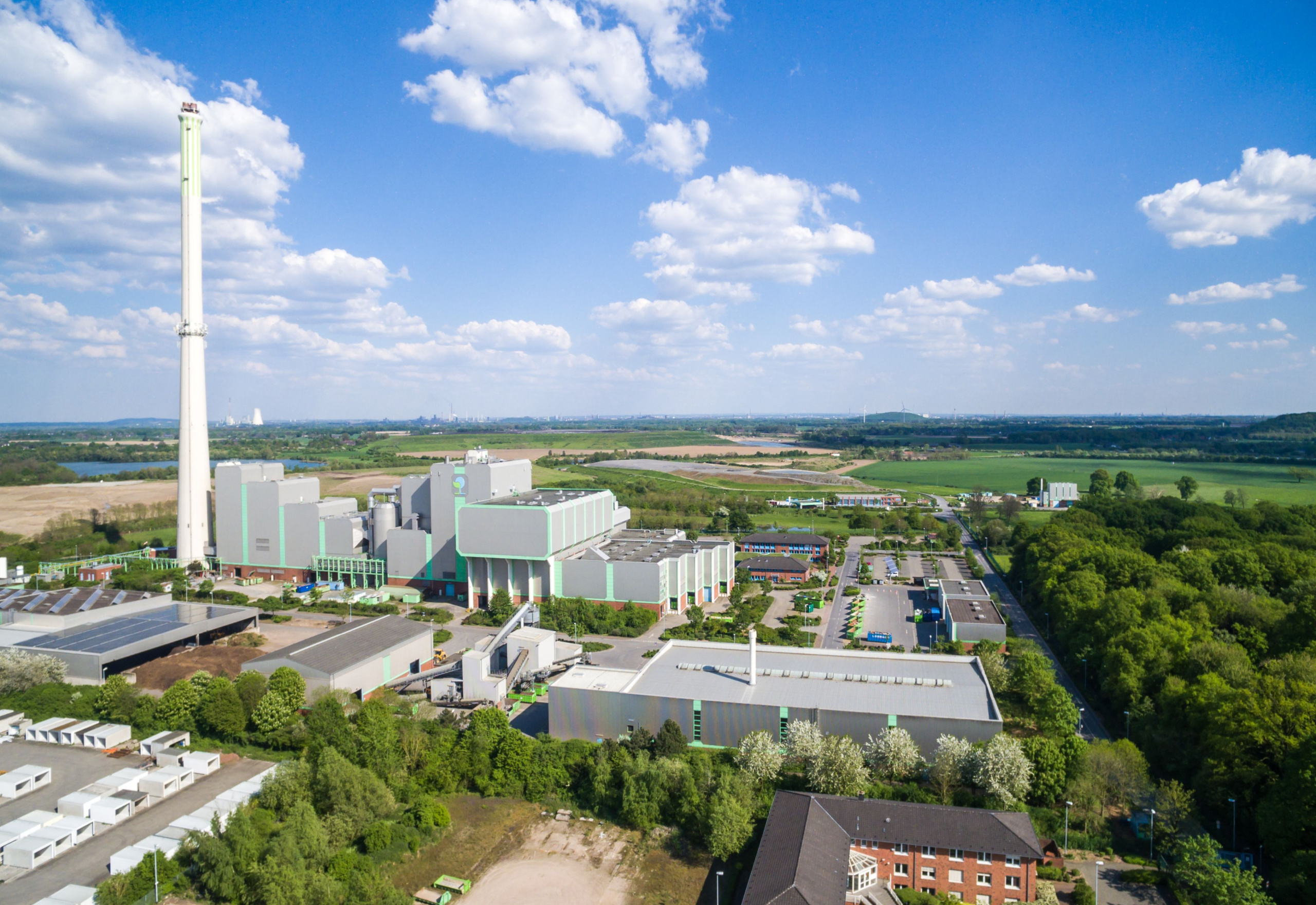Quantitative Gas Analysis with Quadrupole Mass Spectrometers

Written by Terri Melle-Johnson on . Posted in Extrel, Process Insights. No Comments on Quantitative Gas Analysis with Quadrupole Mass Spectrometers

When comparing quadrupole-based gas analyzers for specific applications, consider two main factors: inlet interface suitability and quadrupole mass analyzer performance. Manufacturers often provide inconsistent or incomplete specifications, making it challenging to assess which analyzer is best for reliable and repeatable quantitative gas analysis.
The inlet and interface design ensures the gas analyzer captures, conditions, and transfers the sample without altering it. This ensures accurate measurements across timescales, from milliseconds to hours, through proper upstream transfer elements and downstream pumping components.
Once the inlet and interface are optimized, the quadrupole mass spectrometer becomes the key component, determining the analyzer’s precision, stability, and detection limits. This includes factors like ionization method, transmission characteristics, and electronic performance.
To clarify these differences, we compare two types of quadrupole analyzers: a 6mm rod diameter RGA-type instrument (e.g., MAX300-CAT) and a higher-performance 19mm rod diameter model (e.g., MAX300-LG). By isolating the mass spectrometer’s performance under identical conditions, we highlight practical differences in precision, stability, and detection limits, helping users make informed decisions.
Key Factors to Consider:
The MAX300-CAT, with 6mm quadrupole rods, achieves detection limits of around 5 ppb at slow scan speeds, while the MAX300-LG, using 19mm rods, reaches <1 ppb at slower speeds, with detection limits of <10 ppb at faster scan rates. The MAX300-LG also offers superior precision and stability, making it ideal for demanding applications.
Written by Terri Melle-Johnson on . Posted in Extrel, Process Insights. No Comments on Mass Spec in Semiconductor Fabrication

Ultra-pure gases are crucial for semiconductor fabrication, and continuous monitoring of gas purity ensures maximum production and minimizes costly contamination. Semiconductor manufacturers require real-time verification of process gas purity and detection of trace contamination at low ppt levels.
Our ultra-high purity gas analyzers, such as the Process Insights VeraSpecAPIMS, offer speed, sensitivity, and ease of use to monitor gases like Nitrogen, Argon, Helium, Oxygen, and Hydrogen. The VeraSpecAPIMS uses Atmospheric Pressure Ionization (API) combined with a high-performance mass spectrometer, featuring a 19mm tri-filter quadrupole for optimal performance and reliability.
Benefits of Mass Spec Gas Analyzers:
The VeraSpec APIMS uses corona discharge ionization to ensure exceptional detection limits for trace gases. Combining EI and API ionization techniques, it provides comprehensive analysis of all components in pure gas samples. The Questor5 software enables continuous monitoring with a user-friendly, web-based interface for secure, remote access.
Written by Terri Melle-Johnson on . Posted in Process Insights, Tiger Optics. No Comments on Validating CRDS for Moisture Analysis in Medical Oxygen

To ensure that the oxygen meets the necessary quality to prevent harm to patients, strict standards outline limits to a variety of possible impurities in the gas, one of them being water vapor (H2O). One of the most common standards for medical oxygen is the European Pharmacopeia (EP) standard, we will demonstrate analytical equivalency between the Process Insights’ Tiger Optics’ Spark Cavity Ring-Down Spectroscopy (CRDS) analyzers and demonstrate analytical equivalency to traditional electrolytic moisture analyzers, so the Spark can be used as a more modern and powerful alternative.
Proving Equivalency to European Pharmacopeia
The EP standard dictates that the maximum water vapor content in medical and pharmaceutical grade gas must be less than 67 parts per million (ppm), and the recommended method for analysis of moisture content in medical gases is electrolytic based sensors. Since this standard was published in 1999, gas manufacturers have significantly improved their process efficiency, resulting in considerably higher purity product; at
the same time, the state-of-art in analytical technologies for moisture measurement has evolved. The combination of improved analytical capabilities and higher purity product creates an opportunity for gas manufacturers to maximize the return on oxygen by qualifying it for multiple uses in a single validation step.
Based on powerful, proven CRDS, the Process Insights‘ Tiger Optics Spark H2O offers a wide dynamic range, from single-digit parts-per-billion to one thousand ppm for analysis of moisture in oxygen. This low-cost, fast and accurate analyzer features self-zeroing and auto-verification, eliminating the need for field calibration and saving time & money on labor and consumables. In addition to qualifying oxygen, the same analyzer can service nitrogen, argon, helium, hydrogen, clean dry air, and many other gases and mixtures. In support of the proposed use of the Tiger Optics Spark for qualification of medical oxygen, we present the following validation data, demonstrating equivalency in accuracy of the Spark H2O with two EP-approved electrolytic moisture analyzers.
The Tiger Optics Spark analyzer allows accurate measurement of moisture in oxygen to within ±4% or 6 ppb, whichever is greater, as clearly demonstrated in the present validation data. Thereby, it demonstrates equivalency with the European Pharmacopoeia standard, which mandates a relative accuracy of less than ±20%. Plus, the Spark affords a significant performance advantage over the incumbent electrolytic based sensors, including lower detection limits, wider dynamic range, higher accuracy, and faster speed of response. This allows for better throughput and simplified product qualification, ultimately saving end-users time and money. It should be noted that the ability to conduct one-step qualification of pure oxygen for multiple applications provides significant value to users.
Written by Terri Melle-Johnson on . Posted in Process Insights, Tiger Optics. No Comments on Impurity Monitoring In Fuel-Cell Hydrogen

Global efforts to reduce harmful emissions have focused on lowering carbon output, particularly in transportation. Fuel cells provide a flexible solution, powering everything from laptops to power stations, and are seen as key to transitioning to a zero-emission energy sector. A hydrogen fuel cell efficiently produces electricity with water and heat as the only byproducts, making it ideal for zero-emission vehicles.
While most hydrogen is still made from fossil fuels, a strong hydrogen infrastructure can shift production to carbon-free methods in the future. Fuel cells are more efficient than combustion engines and offer similar range (500-700 km) while refueling quickly at stations, unlike battery-electric vehicles.
However, hydrogen purity is critical to fuel cell performance. Impurities, such as methane, moisture, carbon monoxide, and carbon dioxide, can affect the fuel cell depending on hydrogen production methods. Maintaining low impurity levels is essential for fuel cell efficiency, as specified by standards like ISO 14687 and SAE J2719.

Process Insights provides accurate tools to monitor hydrogen quality. Their analyzers, based on Cavity Ring-Down Spectroscopy (CRDS), detect trace contaminants at ppm and ppb levels, ensuring compliance with purity standards and supporting fuel-cell performance. These instruments are drift-free, highly specific, and require no expensive calibrations, saving time and money.
Written by Terri Melle-Johnson on . Posted in Process Insights, Tiger Optics. No Comments on Moisture Detection in Electronic-Grade Bulk Gases

The semiconductor market is entering a new era of innovation. New applications are driving demand for advanced devices with stricter requirements for reliability, power handling, and power consumption. These devices must also be smaller and more functional, with smaller technology nodes.
Powerful smartphones, tablets, automotive sensor systems, the Internet of Things (IoT), 5G, and smart power grids are all growing rapidly. Self-driving cars, for example, need huge amounts of computing power to process data from cameras and sensors in real-time, and the processors must be both reliable and power-efficient.
The Need for Better Gas Quality and Analytics
To meet these challenges, the semiconductor industry is focusing on improving manufacturing quality. The International Roadmap for Devices and Systems (IRDS) emphasizes stricter controls across all stages of production, from cleanroom conditions to raw materials, including gases. As a result, controlling gas quality has become a top priority to increase yields and reduce failure rates.
With tighter gas quality control, there is also a growing need for more sensitive and accurate analytical tools. Real-time process control has become essential for fab operators.
In advanced semiconductor fabs, Cavity Ring-Down Spectroscopy (CRDS) analyzers are the gold standard for ensuring the quality of bulk gases like N2, CDA, O2, H2, Ar, and He.
Written by Terri Melle-Johnson on . Posted in Process Insights, Tiger Optics. No Comments on HCl Continuous Emissions Monitoring

HCl in the atmosphere has an adverse effect on both human health and the wider environment. The inhalation of even low concentrations of HCl can cause irritation of the respiratory tract in healthy individuals and exacerbate symptoms associated with conditions such as asthma and emphysema.
Dissolved HCl is a contributor to acid rain pollution, the results of which include damage to building materials and reduced crop yields. Atmospheric HCl pollution is also a factor in the production of photochemical smog. The economic impact makes the reduction of HCl pollution a priority for regulators and industry. HCl is generated by multiple industrial processes, with combustion of coal and oil for household and industrial power generation as the primary source. Here, chlorides present in the fuel are converted to HCl in the combustion process and emitted with other by-products. In addition, industrial processes emit HCl as a result of chlorides present in raw materials that are converted to HCl during production. In cement production, for instance, raw materials, including calcium carbonate, silica, clays, and ferrous oxides, all contain chlorides, resulting in generation of HCl.
Regulators worldwide dictate strict emissions limits for many atmospheric pollutants, including HCl. In the United States, the Environmental Protection Agency (EPA) has recently reduced emissions limits to further lessen the impact of the issues. These emissions limits require HCl emitters to monitor and report the level of the gas present in stack emissions and to ensure that steps are taken to guarantee that emissions fall below the specified limits. This may require the emitter to either refine their process, via the use of cleaner fuels, for example, or to add abatement technology downstream of the process to reduce emissions of HCl.
Current analytical methods for HCl CEM applications include GFC/NDIR, FTIR, and cross-stack TDLAS. These methods have, to date, been adequate to monitor HCl emissions, based on existing emissions limits. The detection limits for some of these techniques will not be sufficiently low, however, to meet the revised limits, and so alternative techniques will be necessary.
CRDS gas analysis technology offers the performance and range to cope with these regulations, delivering accurate measurements at levels far below the new limits in diluted stack gas.
Written by Terri Melle-Johnson on . Posted in Process Insights, Tiger Optics. No Comments on Next-Generation Monitoring of Airborne Molecular Contaminants in Cleanrooms

There are, however, molecular contaminants, which can range from small inorganic molecules like acids and bases, to more complex organic species like VOCs. These molecules are known to cause chemical contamination (i.e. they react with the materials and surfaces of the semiconductor devices to cause oxidation, unintended doping, dislocations, and more).
This class of contaminants is collectively known as Airborne Molecular Contaminants (AMCs). They are harder to control than particles. Firstly, the molecules are much smaller than particles and require more advanced chemical filtration of the cleanroom air. Secondly and more importantly, however, many AMCs are created within the cleanroom itself. For instance, HF is used for wafer cleaning within the process, and NH3 is emitted naturally by any person present in the cleanroom. As feature sizes have decreased over the decades, both devices and equipment became more and more susceptible to significant damage from AMCs. They can have various detrimental effects: Acids, such as HF or HCl, can cause micro-corrosion and accelerate oxidation. Bases, such as NH3, can cause hazing and attack coatings on the optics of UV lithography equipment. Hydrides, such as AsH3, PH3, or B2H6, can cause unintended doping, which can dramatically impact a devices functionality.
Monitoring AMCs is Key to Contamination Prevention
Because many AMCs are generated within the cleanroom, they cannot be completely avoided, even though wafers are shielded as much as possible from exposure nowadays, e.g., by transporting them in closed pods (FOUPs) between process steps. Precise monitoring of the cleanroom environment for these molecules has emerged as a key for semi fabs to further mitigate the threat of AMCs. By immediately detecting the presence of harmful molecules, engineering controls can be implemented to protect devices and processes from exposure.
Due to the low concentration of AMCs and the need for fast detection, measurement instruments have to fulfill stringent requirements. As a result, ultra-sensitive laser-based analyzers have emerged as the primary class of instrument used to detect small AMCs, such as HF, HCl or NH3. Semiconductor fabs require all of these molecules to be measured at levels below 1 part per billion (ppb) with a response of 1-3 minutes to any presence of molecules. More importantly, the instruments readings have to return to baseline as fast as possible after the molecules’ presence is eliminated to minimize delays in the manufacturing process. The International Roadmap for Devices and Systems (IRDS) even calls out detection requirements below 0.1 ppb as part of the future technological challenges.
Introducing our NEW T-I Max Next-Generation AMC Monitors
To address this challenge, Process Insights manufacturers the TIGER OPTICS™ T-I Max™ series of cleanroom analyzers for detecting AMCs like HF, HCl, and NH3 with unprecedented speed and sensitivity. The T-I Max uses powerful Cavity Ring-Down Spectroscopy (CRDS) Technology but uses an all-new electronic and optical platform that enables lower measurement noise and up to ten times faster measurement rate. This platform takes CRDS to the next level and dramatically lowers detection limits compared to previous generation analyzers.
Written by Terri Melle-Johnson on . Posted in Process Insights, Tiger Optics. No Comments on Cost-Effective Purity Analysis in the Cryogenic Air Separation Process

CRDS analyzers offer many opportunities to improve the air separation process by saving time and money and alerting plant operators quickly in case of unsafe impurity levels. Key advantages of using CRDS gas analyzers include:
Cryogenic Air Separation
Cryogenic air separation units (ASUs) are the gas industry’s workhorses for the production of gaseous and liquid high purity nitrogen, oxygen and argon. The cryogenic process can be modified to manufacture a range of desired products and mixes.
Controlling Impurities to Ensure Safe ASU Operation
Following compression, the air pre-treatment step consists of cooling and purification to remove process contaminants, such as H2O, CO2 and others. The most common purification methods are Temperature Swing Adsorption (TSA), which exploits the difference in adsorption capacity of adsorbents at different temperatures, and Pressure Swing Adsorption (PSA), which operates similarly via pressure variations.
Written by Terri Melle-Johnson on . Posted in Extrel, Process Insights. No Comments on Monitoring Gasification with a Mass Spec Gas Analyzer

Research in the field of biomass gasification is increasingly important as industry continues to find new uses for syngas. At the Energy & Environmental Research Center (EERC) an Extrel MAX300-RTG process mass spectrometer was used to monitor the exit stream of a Fluid Bed Gasifier. The quadrupole mass spectrometer provided fast, quantitative analysis of the syngas composition.
Over the last several years, concern about the economic and environmental impact of traditional fossil fuel combustion and petrochemicals has led to a search for viable alternatives with gasification emerging as a powerful technique for generating fuel and hydrocarbons. The gasification process makes use of materials such as coal, biomass, and waste to produce synthesis gas, or syngas. Syngas is a combustible mixture of hydrogen, carbon monoxide and carbon dioxide that generally contains a small amount of methane and some trace contaminants. Syngas is used as a fuel source to generate power and heat, or converted into products like hydrogen, for use in fuel cells or fertilizer generation, or liquid fuels via a Fischer-Tropsch reaction.
Gasification and chemical processes utilizing syngas rely upon the ability to obtain information about the composition of the gas stream exiting the reactor. The MAX300-RTG is a 7th generation process mass spectrometer capable of performing quantitative analysis on a wide variety of compounds at concentrations ranging from 100% down to 10 ppb. The 19 mm quadrupole mass filter used by the system allows for high analytical repeatability and long-term stability.
The MAX300-RTG demonstrated that it has the flexibility to quickly characterize and quantify syngas mixtures. It has the sensitivity to detect trace components at ppm levels and below, and the speed to perform each measurement in under 0.4 seconds. The ability to analyze the complete array of syngas components exiting the gasifier, from 100% down to ppm levels, makes the MAX300-RTG an instrument capable of replacing complicated analysis systems involving multiple devices and technologies. The speed of the mass spectrometer means that the MAX300-RTG can be automated to monitor gas composition at several sample points, delivering a complete set of concentrations at 20 seconds per point.
At the EERC, additional sampling at the ports downstream of the reactor could yield important insight into the operation and efficiency of the fixed beds, or be used to analyze hydrogen membrane separation, or a Fischer-Tropsch product. The speed and flexibility of the MAX300-IG, combined with the capability to run 24/7 in rugged and hazardous industrial environments, make it ideal for monitoring production scale gasification and any associated chemical processes downstream. At large facilities that utilize syngas, like ammonia plants, the MAX300-RTG and its predecessors have set the standard for analyzer automation and process control over the last several decades.
Written by Terri Melle-Johnson on . Posted in Extrel, Process Insights. No Comments on Thermogravimetric Analysis/Mass Spectrometry (TGA-MS)

The heated transfer line of the MAX300-EGA™, a quadrupole mass spectrometer designed for evolved gas analysis, was connected to the off-gas port of a NETZSCH® TG 209 F1 Libra® thermobalance. A variety of samples were analyzed and the combination of the two technologies allowed for simultaneous thermal characterization and quantitative analysis of the compounds in the furnace exhaust.
Thermogravimetric analysis (TGA) is a powerful technique that has been used for many years to characterize solid and liquid samples. The mass of the sample material is monitored while it is heated. By using a high precision balance and carefully controlling the heating process, researchers are able to plot mass loss as a function of temperature. TGA is widely used in the study of polymers, pharmaceuticals and petrochemicals to determine degradation temperatures, characterize thermal decomposition, and monitor solvent and moisture content.
Additional information about sample composition and thermal behavior can be obtained by analyzing the gases that leave the material as it is heated. This allows the researcher to determine not only the temperature at which a mass loss occurs, but also the molecular structures involved. Evolved Gas Analysis (EGA) is commonly carried out via a variety of analytical techniques, but in all cases the integrity of the gas stream must be protected. It must be kept hot and moved quickly to the gas analyzer to prevent condensation and chemical interactions.
The NETZSCH TG 209 F1 Libra is a vacuum tight TGA, making it ideal for connecting to a mass spectrometer. The Libra is equipped with an automatic sample changer and can reach temperatures up to 1100°C. It measures sample mass to a resolution of 0.1 μg. The Libra’s heated adapter was connected to the transfer line of the Extrel MAX300-EGA. The interface is differentially pumped for rapid clearing and heated to 200°C to prevent condensation; it provides a low volume, chemically inert sample path from the TGA all the way into the mass spectrometer’s ionizer.
The MAX300-EGA is a quadrupole mass spectrometer optimized for evolved gas analysis in a laboratory setting. It is capable of scanning from 1-500 amu and features the Extrel 19 mm mass filter for high analytical repeatability and long-term stability. The Questor5 software allows the system to perform qualitative analysis for sample characterization, or quantitative analysis, measuring concentrations from 100% down to 10 ppb. In addition to the transfer line, a MAX300-EGA is equipped to import a start-of-heating signal from the TGA and can be configured to perform calculations and trend data or output the data for viewing and manipulation on a different platform.
The furnace of the Libra was loaded with 0.94 mg of polystyrene and heated to over 600°C. The breakdown of the sample was monitored to determine the MAX300’s sensitivity to the small signals generated by high-mass hydrocarbons in the off-gas. Although the TGA records the decomposition of the polystyrene as a single weight loss beginning at 290°C, the MAX300 is able to show that the evolution of several compounds has occurred.
It is generally difficult to keep larger molecules from dropping out of an evolved sample once it has left the furnace, but the mass spectrum at 39.75 minutes clearly shows the presence of styrene in the off gas (Fig. 3. B), as well as the much smaller signal generated by methyl styrene.
The mass of each component in the gas was calculated for comparison to data from the TGA’s balance. Even the relatively small, 60 μg, loss that occurred as moisture left the sample was easily measured and quantified by the mass spectrometer. The MAX300 was also able to individually determine the amount of carbon monoxide and carbon dioxide that, combined, resulted in the second mass loss. While the thermal breakdown of calcium oxalate is well documented, the ability of the MAX300 to perform similar quantitative separations can be used to better understand a complex decomposition featuring the simultaneous evolution of multiple unknown compounds.
The data gathered from the effluent of the TGA 209 F1 Libra indicates that the MAX300-EGA is a powerful tool for evolved gas analysis. The sensitivity, resolution and quantitation demonstrated during the tests indicate the instrument’s potential for other evolved gas applications. In its standard configuration or equipped with the 300 or 400°C transfer line upgrades, the MAX300-EGA could be used to quantify solvent loss in a pharmaceutical sample, detect trace VOCs, or monitor the gas exiting a microreactor.